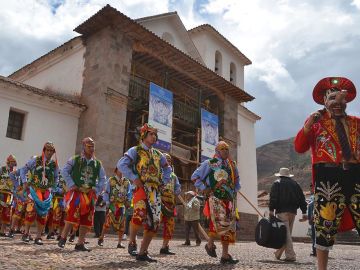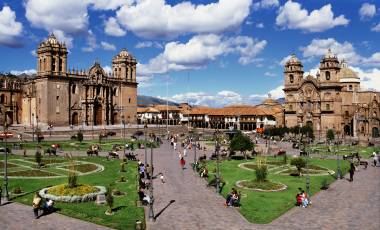There was a time when the Inca Empire ruled over more than 12 million people, carrying its influence from Colombia in the north to central Chile in the south. It’s been nearly 500 years now since the Inca were conquered by the Spanish (in 1532). But their amazing rock-hewn cities, mummies (and the treasures buried with them), colorful textiles, and other aspects of Incan culture continue to capture the imagination of people all over the world.
Unfortunately, our understanding of the Inca remains incomplete. They had no written alphabet, so what we know about their civilization comes from historical accounts, ongoing scholarly research in the ruins of their many settlements, and customs that have survived through the centuries.
More than anything, though, what captivates modern day visitors to Peru are the aspects of Incan culture that remain in practice. Most of these traditions are kept alive in rural areas that are strongly associated with the Inca, such as the Sacred Valley. Here’s a look at a few cultural customs that visitors to the Peruvian Andes may have a chance to see first-hand:
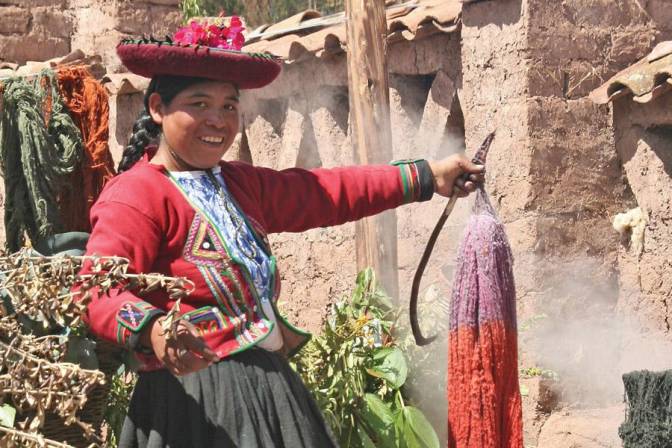
Traditional Textiles
The colorful clothing worn by traditional indigenous Peruvians is arguably the most immediately visible holdover from Incan times. The fact that these ancestral textile traditions have endured is just one of the reasons why they were recognized by UNESCO in 2005 as an Intangible Cultural Heritage of Humanity. This was made possible by the efforts of informal groups of women weavers in the 1960s. Largely based in the Cusco-area community of Chinchero, these women focused on sustaining and reviving age-old weaving practices and using the sale of the by-products to earn income from tourists.
In 1996, those efforts led to the creation of the non-profit Centro de Textiles Tradicionales del Cusco. Known in English as the Center for Traditional Textiles of Cusco, the NGO acts as a champion of indigenous weavers, Cusqueñan textiles, and textile-making practices throughout the Cusco region. To this day, it maintains offices, an informative museum, and a shop in Cusco.
The success of these cultural conservation efforts is now abundantly clear in local weaving centers and town markets all across the country. Most are well-stocked with handmade textiles and other traditional objects, such as musical instruments and art. There is even a growing interest in local-led workshops about yarn-making and dyeing with natural fibers and pigments.
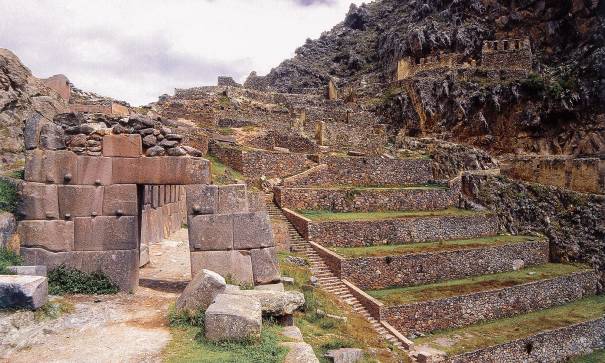
Ancient Inca Ruins
Certainly the most-discussed and famous tangible evidence of the lasting power of the Incan culture are the ruins they left behind. At the top of most travelers’ lists is Machu Picchu, the 15th-century mountain citadel that was brought to international attention in 1911. There is no questioning the majesty of this iconic ridge-top property, which is commonly believed to have been constructed as a royal estate for the Inca ruler Pachacutec Inca Yupanqui (1438-71).
Beyond Machu Picchu, there’s the Sacred Valley, which was so named because it was the fertile estate of the Inca emperor himself. Throughout the Sacred Valley you’ll find a host of other significant Inca ruins (many surrounding Cusco or associated with the valley’s larger population centers), including Chinchero, Ollantaytambo, Pisac, and Tipon.
In all cases you’ll find classic dry-stone walls, masoned out of carefully shaped boulders and fitted together without mortar. You’ll also see large stone terraces used for agriculture (potatoes, maize, fruit, and sweet potato) and to manage irrigation on difficult terrain. These are lasting evidence of ancient innovations that are still in use today. In some cases, particularly in Cusco and Ollantaytambo, contemporary structures follow the layout of the original Inca town and are built atop impressive Inca-era stone foundations.
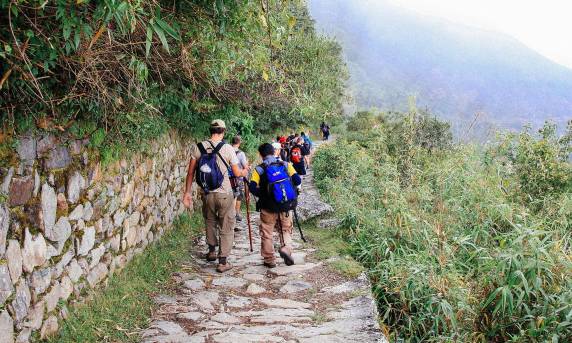
The Inca Trail & Qhapaq Ñan
The Inca Trail is an extremely popular tourist trekking route between Cusco and Machu Picchu. One- to five-day trips trace the paths used and maintained by pre-Columbian people, some of which actually pre-date the Inca. But these walking routes are now limited by quotas to permit-carrying hikers in the company of government-approved guides.
The Inca Trail is part of the Qhapaq Ñan (a.k.a the Great Inca Road). In 2014 it was recognized by UNESCO as the planet’s largest World Heritage Site, consisting of 273 sites across six different countries. The Qhapaq Ñan knit the Inca Empire together by facilitating transport as well as military and religious operations in this most advanced society in South America.
The survival of many sections of these stone-paved roads is a testament to the skill with which they were laid, although a great many sections are disappearing due to disuse. A renewed effort to draw attention to it by leading hiking trips along less-famous sections of the Inca Trail is hoped to lead to its rehabilitation.
Amazing Andean Animals
Some of the unique animals endemic to the Andes, such as the four camelids– Llamas, Guanacos, Alpacas, and Vicuñas– are not specific to the Inca. But they did play a very important role in Inca culture. And what was learned all those centuries ago remains impactful today.
The most emblematic Andean species, the Llama, was the only pack animal used by the Inca. They were strong and nimble over the rough terrain of their native habitat, and the soft pads on their feet did not impact the Qhapaq Ñan the way hoofed animals do.
Their dung was also useful as both fuel and fertilizer, and their hides provided leather and meat. All four camelids were raised for their wool, which was used to make the aforementioned textiles. All of this holds true today as well.
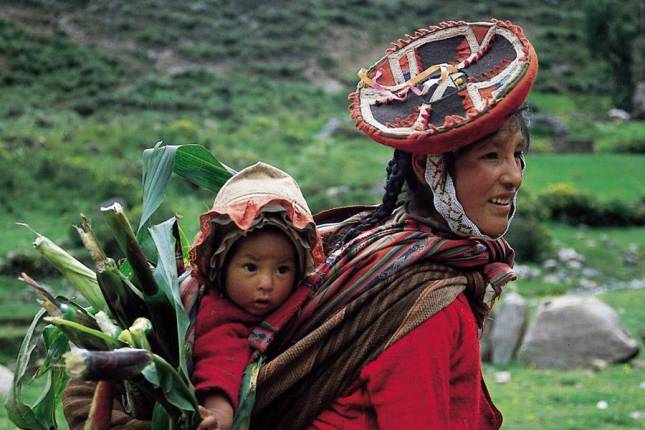
Living Language
Although many visitors to Peru don’t take immediate notice of it, between three and four million still people speak Quechua, the main language of the Inca. In fact, in 1975 Peru became the first country to recognize Quechua as one of its official languages. Today, Quechua and Spanish are frequently intermixed throughout the Andean region.
Some Quechua words have even made it into common usage in English, such as coca, condor, guano, jerky, llama, poncho, puma, quinine, quinoa, and vicuña.
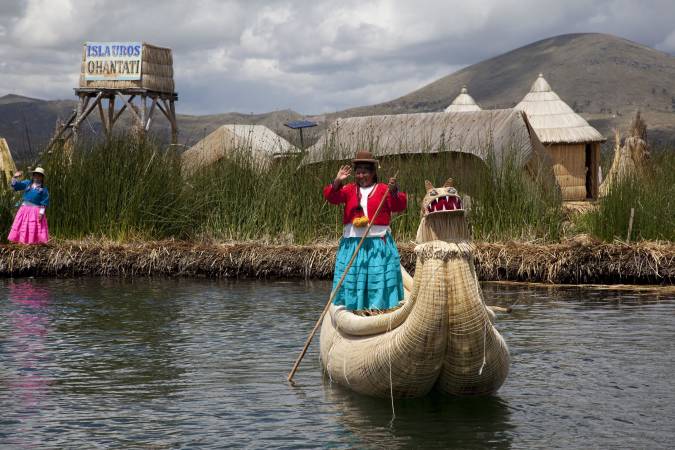
Sun & Earth Ceremonies
The ancient Peruvians’ appreciation for nature was based on a mixture of respect, fear, and adoration. After all, they relied on earth’s bounty, which led to their worship of the earth (called Pachamama), the goddess of fertility, and the sun (which was sometimes referred to as Inti, the Sun God).
Still today, Inca ceremonies celebrating Inti and Pachamama are performed annually. The most famous of these is Inti Raymi. It takes place every June 24 in three historical sites in and around Cusco – Coricancha (the sun temple), Haucaypata (a.k.a Cusco’s Plaza de Armas), and on the Sacsayhuaman esplanade. Approximately 750 actors portray ancestral Inca in lively homage to the sun god.
Also still practiced on a much smaller scale, but sometimes open to visitors, are “payment to the earth” ceremonies. These rituals involve burying coca leaves, seeds, silver, a local alcoholic drink called chicha, and more.
Andean Art
The legacy of Incan culture endured long after the Spanish conquest, and even affected local Andean art.
In the south of Peru (in the area around Arequipa, Puno, and Lake Titicaca), the 17th-century Andean Baroque artistic movement took hold, particularly in religious art. Created by indigenous craftsmen, the style included decorative elements with strong pre-Columbian touches that included local plants, animals, masks, and Incan cultural motifs such as the sun and moon.
Similarly, further north in Cusco, the Cuzco School (Escuela Cuzqueña) was a religious artistic tradition that began in the 16th century as a result of Spanish artists brought in to work with Quechua people. When the indigenous painters were left to their own devices, they developed their own styles, using brighter colors and dramatic imagery. They pursued their own culturally relevant subject matter, including the use of local plants and animals, while remaining anchored in European artistic form.
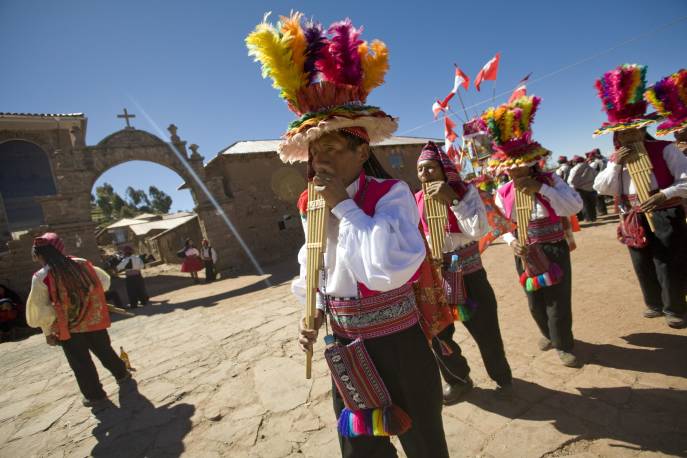
Other Topics
Despite concerted efforts by the Spanish to eradicate Incan influence altogether, the lasting impacts of Incan culture finds expression in many ways. You can see it in everything from the pottery practices in common housewares and religious objects to the reed water crafts used by fishermen and built using century-old knowledge. In this way, elements of ancient Incan tradition seem likely to thrive for many centuries to come.

